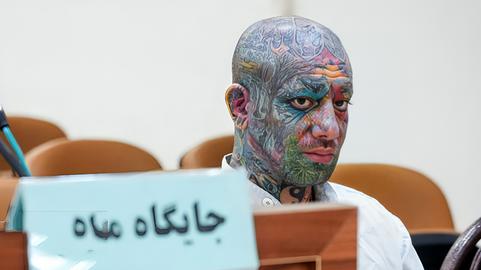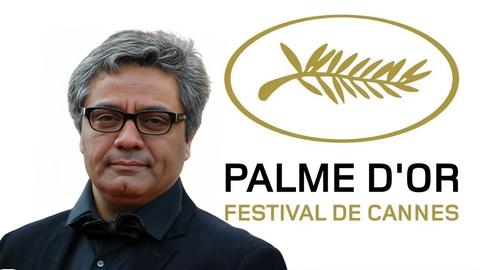Freedom of Assembly is a basic human right under international law, but not one by which Iranian authorities readily abide. Article 20 of the United Nations’ Universal Declaration of Human Rights, which Iran signed back in 1948, states, “Everyone has the right to freedom of peaceful assembly and association.” But while most states balance this right against their citizens’ other rights, such as safety, Iranian authorities regularly crack down hard on even seemingly innocuous public gatherings. That may be because the power of crowds has, throughout modern Iranian history, determined who rules the country.
Here, IranWire looks at crowd control in Iran, starting with recent events, and harking back to a signal national trauma.
Fear of Animal Rights—or Instagram
Every year at the end of Iranian New Year celebrations – usually in late March or early April – Iranians celebrate Nature Day by picnicking and enjoying the spring weather. Nature Day has taken on special significance for environmentalists and animal rights activists in recent years. On April 1 this year, a group of about 70 activists gathered in Tehran to express hope for better treatment of animals in the New Year. Among them was actress Hedieh Tehrani, who had invited her Instagram followers to join the demonstration. But security forces lay in wait for them and soon moved in. Protesters reported being beaten by plainclothes agents, and Tehrani and 16 other people were arrested. Curiously, a similar protest had gone ahead without difficulty in February, but the existence of a social media-generated crowd is most likely what alarmed the authorities.
Fear of a Water Pistol Flash Mob—or Facebook
In the spring of 2011, as crowds in Arab countries gathered to oppose their authoritarian leaders, and Libya and Syria descended into civil war, Iranian authorities took no chances with large gatherings. Later that year, when several hundred young people armed with water pistols and water bottles assembled in a Tehran park for an almighty water fight, authorities quickly moved in and made arrests, and religious conservatives denounced what they saw as the sexual impropriety of young men and women getting wet together. The gathering, which had been organized on Facebook, demonstrated the power of social media to bring large numbers of people together suddenly. It was just one in a string of social media-inspired “flash mobs” that appeared that summer, which also included gatherings to blow bubbles and fly kites.
Fear of Dead Heroes
Mourning is often a political process in Iran, and an occasion for those with political causes to gather legitimately. Ashura, the yearly religious mourning ceremony for Hossein, grandson of Muhammad, has carried political overtones throughout Iran’s modern history. During the Shah’s rule, it provided Ayatollah Khomeini’s supporters the occasion for massive protests in both 1963 and 1978. The first led to Khomeini’s arrest and subsequent exile. The second presaged the Shah’s overthrow and Khomeini’s return in 1979. Mourning for contemporary figures can carry immense political weight as well. On December 19, 2009, the 86-year-old Ayatollah Hossein Ali Montazeri died in the clerical city of Qom. Montazeri was famous for his dramatic split with Khomeini over the question of political executions in the late 1980s. Hundreds of thousands of people from across Iran attended his funeral, shouting opposition slogans. In a bad stroke of luck for the government, the seventh day after Montazeri’s death—a special mourning occasion in Shia tradition—fell on the very day of Ashura, which saw the last of 2009’s massive protests.
Fear of Another Big One: 2009’s Green Movement
Iran’s presidential election on June 12, 2009, led to the largest mass demonstrations in Iran since the 1979 revolution. Official election results handed incumbent Mahmoud Ahmadinejad a substantial win, but supporters of opposition candidates Mir-Hossein Mousavi and Mehdi Karroubi claimed the vote had been rigged, and pointed to what they saw as suspicious circumstances, such as reports of impropriety at polling stations, as well as the speed with which officials declared results. “Where is my Vote?” could be heard all over Tehran the following day, when hundreds of thousands of protestors, many dressed in green – Mousavi’s campaign color – took to the streets. Within days, Supreme Leader Ali Khamenei dismissed the protestors’ claims and ordered a heavy government crackdown. Ballooning demonstrations – some of which were said to involve millions of people – met violent opposition from security forces, who arrested thousands of people, and caused a number of deaths (36 is the official figure). But that didn’t put an end to the demonstrations. Throughout 2009, protests erupted on national holidays, always meeting a violent response from security forces. Iranians living abroad also protested in the major cities of Europe and North America. It wasn’t until spring 2011, when authorities placed Mousavi and Karroubi under indefinite house arrest, without trial, for “sedition,” that the Green Movement was contained.
Fear of a “Soft Overthrow”
Whereas much of the world saw Iran’s Green Movement as an expression of Iranian civil society and democratic potential, Iran’s Supreme Leader Ali Khamenei saw it as a conspiracy guided from abroad. He has two models in mind: The largely nonviolent “color revolutions” that took place in several former Soviet republics in the 2000s and the “Velvet Revolution” that brought opposition leader Vaclav Havel to office in the former Soviet satellite of Czechoslovakia in 1989. Color revolutions, Khamenei believes, are guided by western powers – mainly the US and Britain – and designed to serve those countries’ foreign policy interests. Khamenei has repeatedly argued that Iran was at risk of these “color revolutions,” often focusing on the 2003 “Rose Revolution” in neighboring Georgia. He has explicitly called the Green Movement in Iran “a failed color coup d’etat.” The collapse of communist regimes in Eastern Europe also strikes Khamenei as a model for what the West would like to see happen in Iran. At the end of the Cold War, Moscow – then implementing its own reforms at home – could no longer sustain its restive dependencies. But with the exception of Romania, which summarily executed dictator Nikolai Ceausescu, the former Soviet countries have seen non-violent transfers of power to liberal democratic governments. Since the 2000s, Iranian political prisoners have reported being accused of “barandazi narm” – literally “soft overthrow” – a term derived from “Velvet Revolution.”
Fear of a Western-Backed Coup
In 1951, Iran’s popular nationalist prime minister, Mohammad Mossadegh, nationalized Iran’s oil industry, outraging Britain, whose Anglo-Iranian Oil Company (which later became British Petroleum) controlled Iran’s oil. Mossadegh, though not “democratically elected” as is often claimed, drew support from broad sections of society, including secular liberals, communists, and even the political clergy. He often faced off against the Shah over the separation of powers in Iran, and could bring his supporters into the streets in mostly peaceful displays of popular support. But British intelligence, increasingly needled by Mossadegh’s rhetorical assaults on British attempts to coerce Iran over the oil question, spooked the CIA and the Eisenhower administration over Mossadegh’s supposed reliance on communist supporters. As a result, the Shah, under US pressure, dismissed Mossadegh in 1953. Mossadegh retaliated by bringing his supporters into the streets, but when the protests took on a revolutionary and republican character he called them off to avoid bloodshed and opened the way for pro-Shah military officers and CIA-backed thugs to overthrow him. Khamenei has famously said, referring to US-backed coups in Chile and Iran, “We are not liberals like Allende and Mossadegh, whom the CIA can snuff out.”



























comments